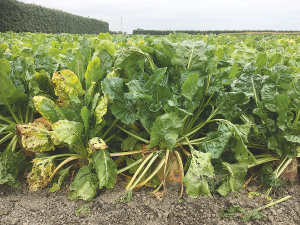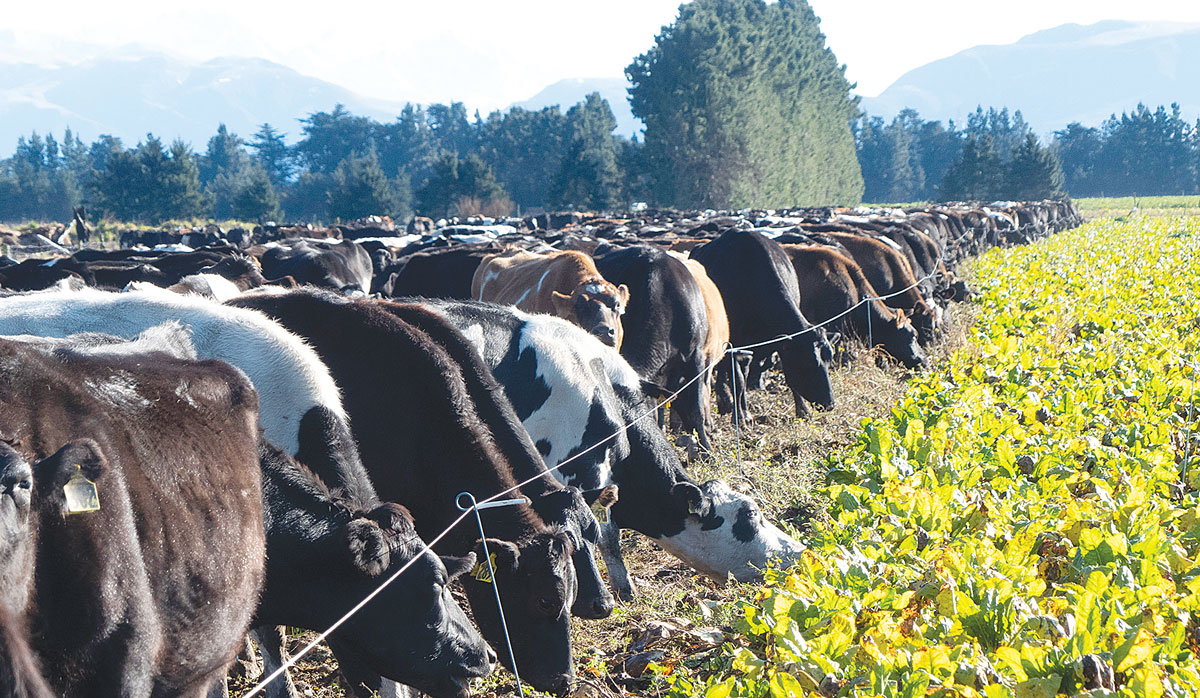Turning data into dollars
If growing more feed at home adds up to $428 profit per tonne of dry matter to your bottom line, wouldn’t it be good to have a ryegrass that gets you there quicker?
 Research has found that it’s possible to reduce fodder beet fertiliser use by up to 50% with no effect on yield or quality.
Research has found that it’s possible to reduce fodder beet fertiliser use by up to 50% with no effect on yield or quality.
New research shows that it is possible to reduce traditional fertiliser recommendations for growing fodder beet – sometimes by more than half the usual amount – with no effect on crop yield or quality.
Plant & Food Research, along with industry partners, recently completed a three-year study with the assistance of the Ministry for Primary Industries’ (MPI’s) Sustainable Farming Fund to determine the best way to grow fodder beet, a popular supplementary feed crop for livestock in New Zealand.
The researchers conducted a series of nitrogen, potassium and boron trials to establish whether standard management practices could be recommended for varying soil types and locations.
“Much of our information about the nutrient requirements of fodder beet came from European sugar beet guidelines – for example, recommending high rates of potassium to support high yield,” says John de Ruiter, senior scientist at Plant & Food Research.
“However, in every trial we conducted across many New Zealand soil types we were able to lower the potassium applications to 100kg per hectare without yield loss when compared to the standard rate of 350kg per hectare.”
The researchers also found the maximum plant response to nitrogen was achieved at 100kg per hectare – half the industry standard of 200kg per hectare.
“I was surprised that we could bring nitrogen fertiliser rates down that much,” says de Ruiter.
“This means a reduction in the amount of nitrogen in the feed and a reduction in the amount of nitrogen returned to soil through excretion, which is a good result for the environment – and is also a big saving for farmers.”
Symptoms of boron deficiency (hollow bulbs) occur on some soil types. However, trials with varying rates and timing of boron fertiliser didn’t show any effects on yield or plant health.
“Basal applications of boron at sowing are still recommended to avoid any potential boron limitations,” says de Ruiter.
 |
|---|
|
The researchers found the maximum plant response to nitrogen was achieved at 100kg per hectare – half the industry standard. |
The researchers also examined diseases in fodder beet crops. “When fodder beet first regained popular use 15 years ago, the disease incidence was low, and there was great potential for fodder beet as a winter crop. But in recent seasons, the incidence of fungal and viral diseases have hit hard with a major reduction in paddock yields,” says de Ruiter.
“While there’s not much that can be done about viruses, some control of fungal diseases is possible,” de Ruiter adds. “However, few chemicals for fungal control are registered for use in New Zealand.
“Experiments with timing and rates of fungicide application did not give conclusive results, so more work on the epidemiology and control of fodder beet diseases is needed.”
Steve Penno, director investment programmes at MPI, says it’s essential to find out what works best in New Zealand, and not just rely on overseas experience.
“This research provides valuable and practical information for growing fodder beet in New Zealand – its recommendations for reduced fertiliser use are a win for the environment and will save farmers money, too.”
A major outcome of the research project is the ‘Fodder Beet Best Management Production Guide’. The guide will be available soon on the Dairy NZ website or contact John de Ruiter (This email address is being protected from spambots. You need JavaScript enabled to view it.) for a copy.
Fodder beet growth
Fodder beet has gained popularity in New Zealand’s dairy industry as a winter feed – with farmers looking to benefit from its high yield potential and good feed quality characteristics.
Approximately 45,000 hectares were grown in 2014–15 from Southland to Northland. This increased to around 75,000 hectares in 2018-19, making fodder beet the second most widely grown forage crop in New Zealand.
About 80% of fodder beet is grown for pregnant non-lactating dairy cows during winter; and an increasing amount is being used as a feed during lactation, as well as for winter feeding in the sheep, beef and deer sectors.
The National Wild Goat Hunting Competition has removed 33,418 wild goats over the past three years.
New Zealand needs a new healthcare model to address rising rates of obesity in rural communities, with the current system leaving many patients unable to access effective treatment or long-term support, warn GPs.
Southland farmers are being urged to put safety first, following a spike in tip offs about risky handling of wind-damaged trees
Third-generation Ashburton dairy farmers TJ and Mark Stewart are no strangers to adapting and evolving.
When American retail giant Cosco came to audit Open Country Dairy’s new butter plant at the Waharoa site and give the green light to supply their American stores, they allowed themselves a week for the exercise.
Fonterra chair Peter McBride says the divestment of Mainland Group is their last significant asset sale and signals the end of structural changes.

OPINION: Your old mate welcomes the proposed changes to local government but notes it drew responses that ranged from the reasonable…
OPINION: A press release from the oxygen thieves running the hot air symposium on climate change, known as COP30, grabbed your…